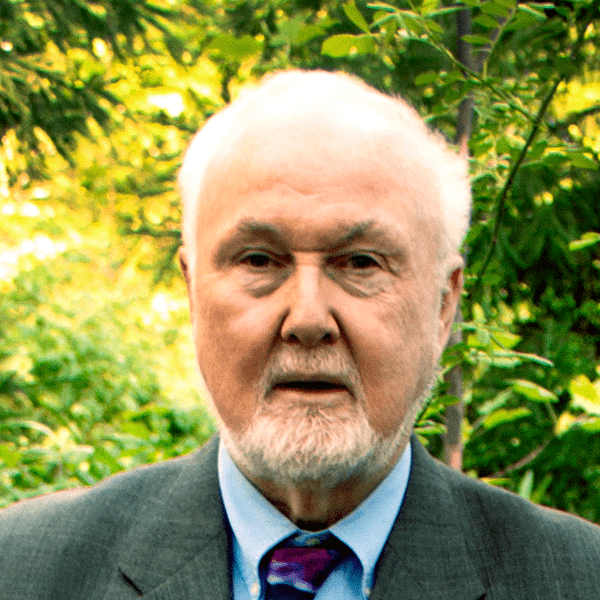
Paul Stankard complements Paul Hollister on his importance as a glass critic in a 1985 conversation.
3:44Paul Stankard complements Paul Hollister on his importance as a glass critic in a 1985 conversation. Interview with Paul Stankard by Paul Hollister, June 26, 1985. Interview with Paul Stankard by Paul Hollister, January 11, 1987 (Rakow title: Paul Stankard interview [sound recording] / with Paul Hollister, BIB ID: 168454) Clip length: 03:45.
Paul Stankard (PS): [Speaking while driving] Oh, I’d like [laughs] Would the, with the recorder in front of us, I’d like to make sense out of it.
Paul Hollister (PH): We’re going through Paulsboro [New Jersey].
PS: Well, we’re heading [PS and PH talk at the same time.] We’re heading towards Mayfair [New Jersey]. But with the recorder in front of you, you’ve been responsible for stimulating more artists in glass than any person that I could think of. And your ideas have been integrated into the artists’ work at a—it’s been phenomenal. I don’t know, somebody, well, a lot of the conversations that we’ve had over the years about contemporary glass and about the very—and your criticism about the work has—the works evolved and met your predictions. I just figure that it’s your, you know, your criticism of the—you know, the artist, if he, if he has half a brain, he’ll consider the critic’s review and if he agrees, he’ll implement it.
PH: There’s some of them that just [laughs] give you a complete brush off. Let me tell you one little thing, this was part of the—
PS: Well, that’s lack of maturity as an artist. You’ve given me over the years, your—our conversations on the telephone have stimulated me, has produced, God, many, many ideas that I’ve implemented.
PH: Well, I’m glad of that.
PS: Yeah, well, it’s exciting, you know. You take the, you get the ideas where you find ‘em.
PH: I wonder how much they want for those Gothic windows? Not too much, I don’t think. Boy, those are terrific.
PS: Another interesting thing about your criticism about my work over the years has led me to discover things that research, various artist imagery, how I could be, you know, how to render nature—oh, I don’t know. I think that it’s great to have input, and I always thought it was very flattering for a person to consider your work cause there’s so much competition. Artwork is competing—
PH: Yup.
PS: —with tons and tons of work for attention and when you give a person’s work attention, I think that’s a very flattering experience.
PH: Yeah, I guess, I got some attention for you in the bag here.
PS: But the contemporary glass experience, and here we are in 1985, and the contemporary glass experience is pooping out, and it’s pooping against the collective will of hundreds of people [chuckles]. Nobody wants it to disappear and for some reason, the energy’s—the energy level is being drained right out of it. You can almost see it. Month to month.
PH: I’m getting that feeling, too.
PS: Well.
PH: But let me just mention one thing just before we go in. When you say, ‘giving input to people,’ in this talk in the High Museum [Atlanta, Georgia], which I will send you—
PS: Mm-hmm.
PH: —I had mentioned the, on the matter of criticism, that one person I had made the mistake of reading something that I had written to him, cause I wanted to check over the technical details to see if it was alright, and I said this is a prominent artist and after he heard it, he tried to stop publication of the piece.
PS: [laughs]
PH: I didn’t mention who it was.